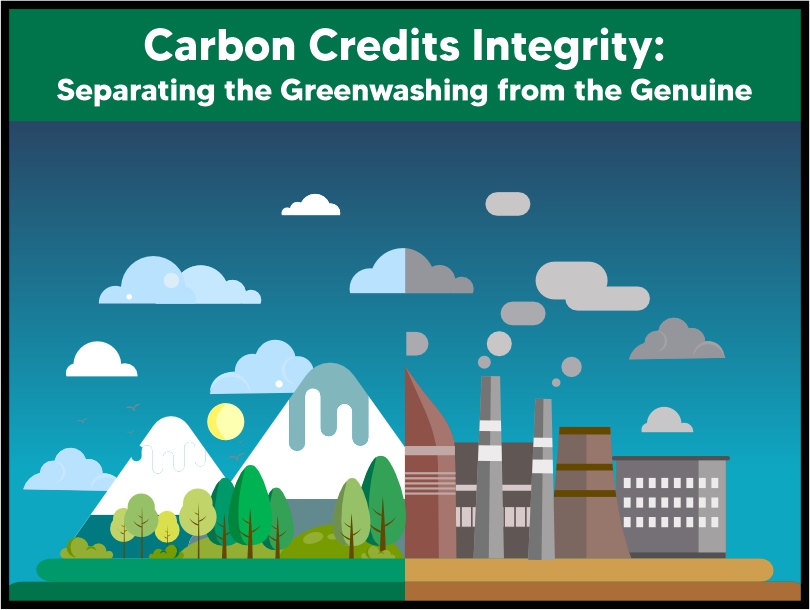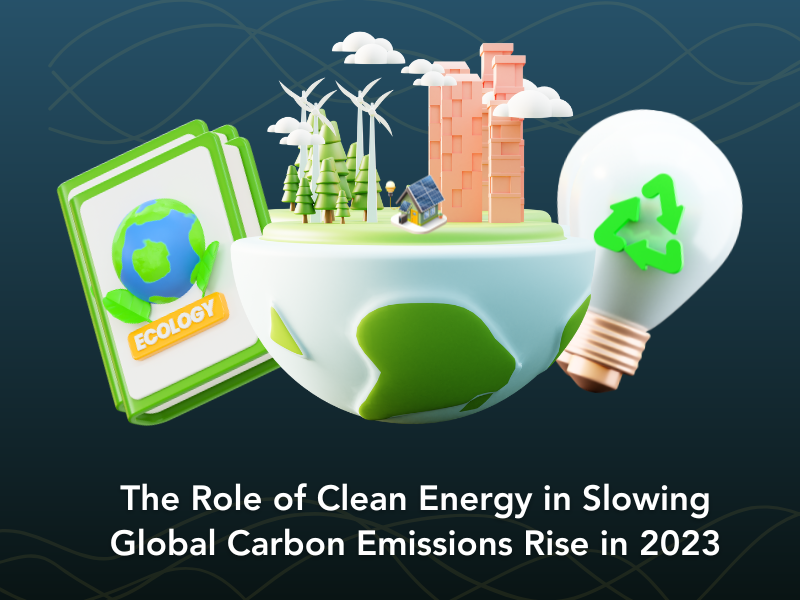Energy Attribute Certificates (EACs) play a pivotal role in tracking the origin of renewable electricity and its environmental attributes. By providing transparency and accountability, these certificates enable buyers to claim ownership of the environmental benefits associated with clean energy. EACs come in two forms: bundled and unbundled. While both types serve the same purpose, their distinct modes of purchase offer different advantages to buyers based on their organizational size, energy requirements, and climate targets. This article delves into the concept of bundled and unbundled EACs, explores their benefits, and highlights the scenarios where unbundled EACs can be particularly advantageous.
Understanding Energy Attribute Certificates (EACs)
Energy Attribute Certificates are instruments designed to trace the origin of renewable electricity and provide detailed information about its generation. These documents disclose vital data such as the location and time of production, the technology employed, and characteristics of the power plant. As electrons cannot be physically traced in the grid, EACs facilitate the tracking and verification of renewable energy consumption. Moreover, these certificates serve as proof of environmental attributes associated with clean energy, enabling buyers to make emissions reduction claims.
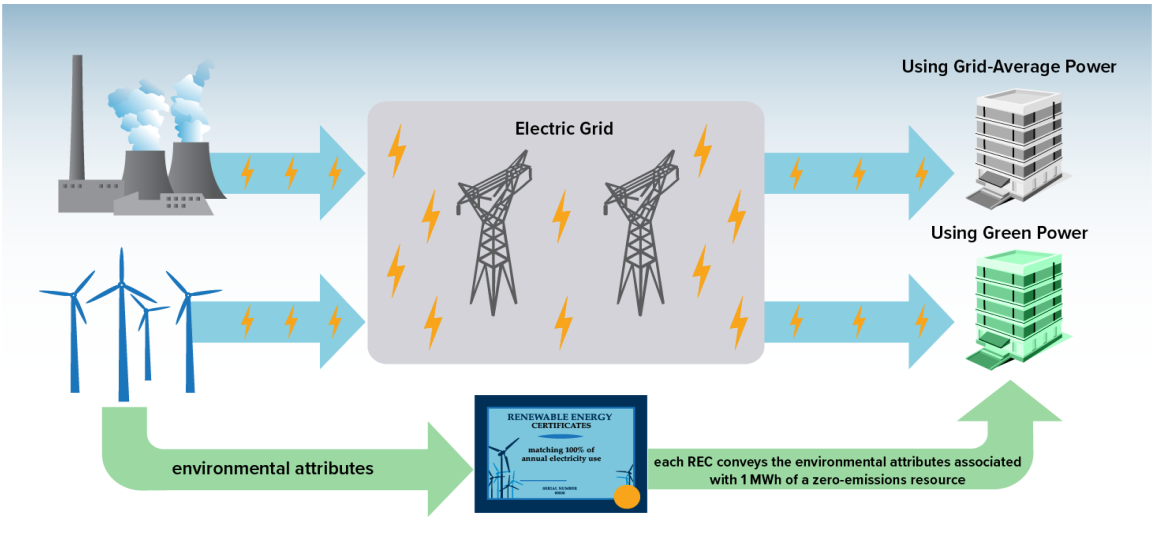
Bundled and Unbundled EACs
The fundamental distinction between bundled and unbundled EACs lies in their mode of purchase. Bundled EACs are sold together with physical electricity as part of the same contract. This arrangement is often seen in Power Purchase Agreements (PPAs) between electricity producers and consumers. In contrast, unbundled EACs are sold separately by third-party retailers who do not provide physical electricity. In both these cases, the consumers who purchase Energy Attribute Certificates (EACs) rely on the electricity supplied by the grid while utilizing the certificates to validate their consumption of renewable energy and support their claims of emissions reduction.
Advantages of Bundled EACs
Bundled EACs offer several benefits to energy consumers. One significant advantage is the association with Power Purchase Agreements. PPAs are long-term contracts that fix the price of both energy and EACs over a determined period. This provides consumers with a sense of stability and hedges them against volatile energy markets. By guaranteeing stable energy costs, PPAs ensure that the conditions upon which businesses rely will not change abruptly, thereby fostering a conducive environment for sustainable growth.
Another advantage of bundled EACs is the alignment between a company’s energy consumption and the production of a specific power plant. Although the rules for matching EACs with renewable energy consumption may vary across countries, some organizations prefer to keep them closely tied together. This closer matching strengthens the connection between the buyer and the renewable energy source, enhancing the credibility of the organization’s sustainability claims.
Let us consider an example. A large manufacturing company wants to reduce its environmental impact and commits to using renewable energy. They sign a Power Purchase Agreement (PPA) with a wind farm, which includes bundled EACs. This agreement guarantees the company a fixed price for renewable energy and shields them from volatile electricity market prices. By purchasing bundled EACs, the company can substantiate its renewable energy consumption and make accurate claims about emissions reduction.
However, it should be noted that engaging into a PPA for long term contract of power purchase is feasible for organization when they have significant and uniform electricity consumption. For organizations with multiple facilities and smaller consumption (eg. Service sector and ICT organizations), getting bundled EACs can be a cumbersome and backbreaking task.
There is also an increasing market demand for EACs as they provide a transparent and reliable way to verify the origin and generation of renewable energy. By time-stamping the certificates, it becomes easier to track the specific time period during which the energy was generated, ensuring accuracy and credibility in renewable energy claims. Time-stamped EACs contribute to market transparency by providing clear evidence of the renewable energy generation and consumption and they also enable efficient tracking and trading of renewable energy certificates.
Advantages of Unbundled EACs
Unbundled EACs, eg I-RECs/GO/REC, offer distinct advantages, especially for organizations of varying sizes and energy needs. The most significant advantage is accessibility. Unbundled certificates are sold at prices regulated by supply and demand, allowing a wide range of consumers, from multinational corporations to NGOs and private citizens, to choose their energy source without committing to long-term contracts. This flexibility empowers consumers with diverse budgetary capacities to support renewable energy and contribute to the energy transition.
Furthermore, unbundled EACs offer greater autonomy and choice to buyers. They enable customers to select from a variety of providers and installations that align with their sustainability targets. By providing options, unbundled EACs encourage competition among renewable energy producers, fostering innovation and driving down prices. Additionally, buyers of unbundled EACs are free to procure physical electricity from different providers, diversifying their energy sources and further supporting the transition to renewables.
Consider this example. A small startup with limited resources aims to support renewable energy and reduce its carbon footprint. Instead of entering into a long-term contract, the startup opts to buy unbundled EACs from a third-party retailer. They can choose from various renewable energy projects and providers, tailoring their purchase to match their sustainability goals. By purchasing unbundled EACs, the startup contributes to the revenue stream of renewable energy generators and supports the transition to clean power.
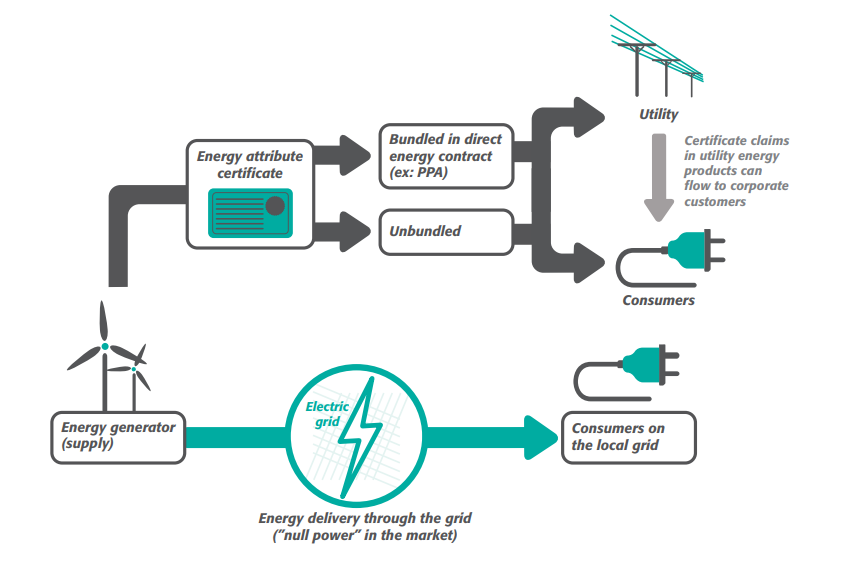
Contribution to the Energy Transition
Both bundled and unbundled EACs contribute significantly to the energy transition. By putting a premium on clean electricity, EACs increase the earnings of renewable energy producers and make investments in renewable capacity. Bundled EACs, through PPAs, facilitate the development of new renewable energy projects and reduce emissions. Unbundled EACs, by providing flexibility and accessibility, enable a wide range of consumers to support renewable energy, irrespective of their organization’s size or budget. Thus, the choice between bundled and unbundled EACs depends on the specific needs and goals of the buyer. These certificates not only document renewable energy purchases but also contribute to a low-carbon future by incentivizing investment in clean power and allowing consumers to make informed environmental claims.
How Can I-RECs Help in Reducing Scope 2 Emissions and Accelerating Progress Towards SBTi
The need to mitigate climate change has prompted organizations to adopt emission reduction strategies, including setting Science Based Targets (SBTi) to align their carbon footprint with the goals of the Paris Agreement. Science Based Targets (SBTi) provide organizations with a framework to set ambitious and measurable emission reduction goals. These targets are deemed “science-based” when they align with the latest climate science and contribute to limiting global warming to 1.5 degrees by 2100. Organizations committing to SBTi targets demonstrate their commitment to tackling climate change and contributing to a sustainable future. One crucial aspect of emission reduction is addressing Scope 2 emissions, which primarily result from purchased electricity. To effectively reduce these emissions, organizations can utilize unbundled EACs like International Renewable Energy Certificates (I-RECs). Scope 2 emissions refer to indirect greenhouse gas emissions resulting from the consumption of purchased electricity, heat, or steam. These emissions occur outside an organization’s operational boundaries but are associated with the electricity used within the organization. As organizations strive to reduce their carbon footprint, addressing Scope 2 emissions becomes a critical focus area.
I-RECs, are unbundled EACs also known as International Renewable Energy Certificates, are market-based instruments that enable organizations to track and claim the environmental attributes of renewable electricity. These certificates certify that a specific amount of energy has been generated from renewable sources and injected into the grid. By purchasing I-RECs, organizations can ensure that the electricity they consume is sourced from renewable energy projects. This approach allows them to displace fossil fuel-based electricity consumption and significantly reduce Scope 2 emissions. Through the purchase of I-RECs, organizations support the development of renewable energy infrastructure and stimulate further investments in clean energy projects.
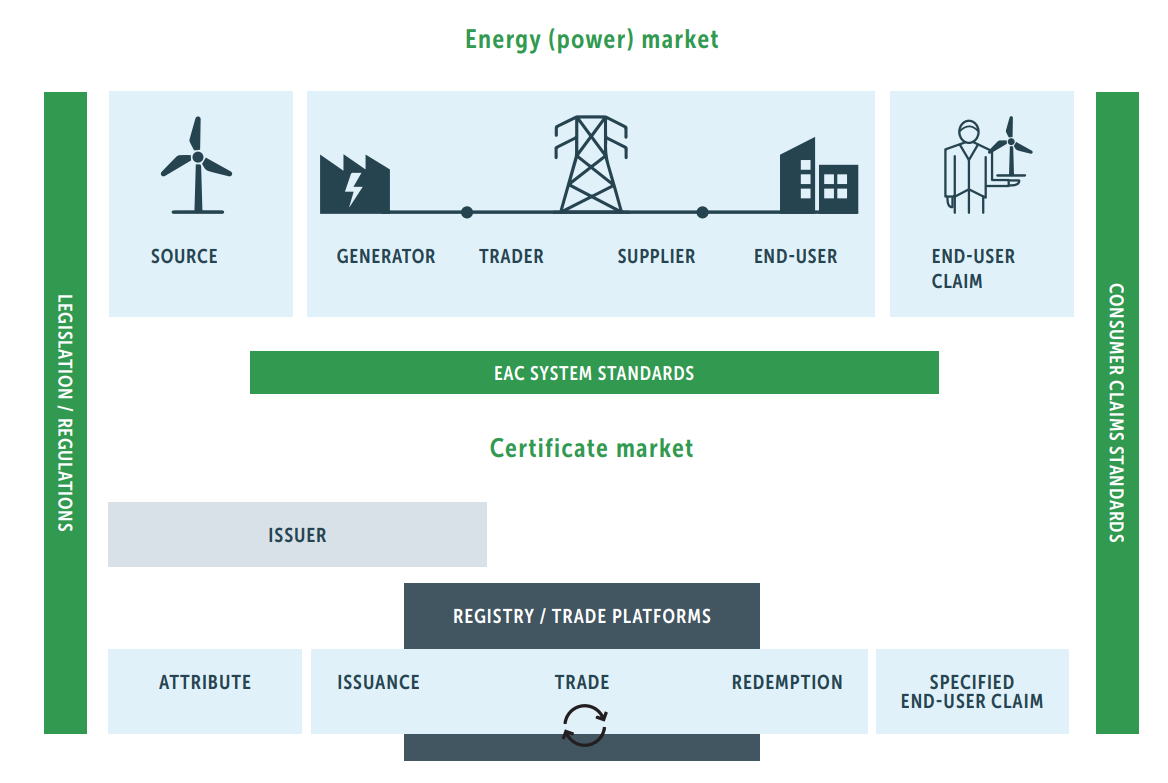
I-RECs provide a powerful mechanism for organizations to meet their SBTi targets, particularly those related to Scope 2 emissions reduction in market-based approach. By incorporating I-RECs into their energy procurement strategy, organizations can demonstrate the additionality of their renewable energy consumption. Additionality refers to the direct impact an organization has on increasing renewable energy generation beyond business-as-usual scenarios. When an organization procures renewable electricity and matches it with the corresponding amount of I-RECs, it ensures that the renewable energy it consumes is not being double-counted or claimed by another entity. This process verifies the environmental attributes of the electricity and enables organizations to make credible claims about their Scope 2 emissions reductions. I-RECs enable organizations to go beyond simply purchasing renewable electricity. They provide a standardized and internationally recognized mechanism to validate the origin and environmental benefits of renewable energy consumed. By embracing I-RECs, organizations can demonstrate their commitment to sustainable practices, enhance their environmental credibility, and drive the transition to a low-carbon economy.
EKI can help your organization meet Science Based Targets and assist in low carbon transition by supplying I-RECs. Reach out at business@enkingint.org


